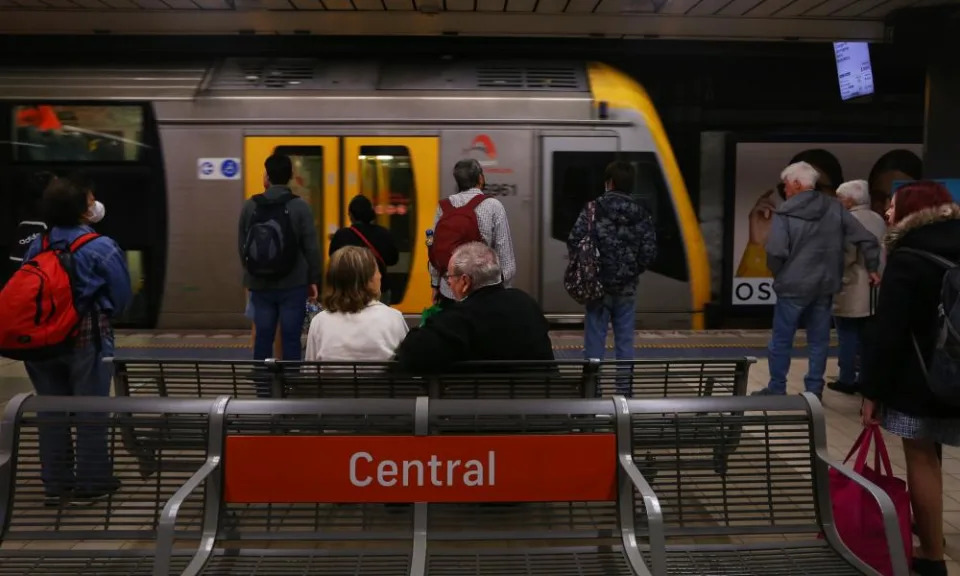‘Ineffective’ rail corporation was designed to meet NSW budget goals, auditor general says
Tamsin Rose
Tue, 24 January 2023

Photograph: Lisa Maree Williams/Getty Images
New South Wales’s controversial rail corporation’s formation was ineffective, incohesive and opaque and the corporation was designed to meet the government’s immediate budgetary goals, the auditor general has found.
Margaret Crawford’s report into the Transport Asset Holding Entity, or Tahe, also found the design had created an “unnecessarily complex” model with “significant uncertainty” around the possibility for future financial improvements.
“The design and implementation of Tahe was not effective,” she said.
Related: PR firm given $560,000 to combat ‘negative’ views of controversial NSW rail body
“The process was not cohesive or transparent. It delivered an outcome that is unnecessarily complex in order to meet the NSW government’s short-term budget objectives, while creating an obligation for future governments to sustain Tahe through continuing investment, and funding of the state-owned rail operators.”
Tahe was established in 2020 after seven years of planning to transfer the state’s $40bn rail assets out of the hands of the transport department and into a state-owned corporation.
The move benefited the government’s bottom line by allowing Tahe to lease assets back to operators like Sydney Trains, meaning the government could classify funding to the corporation as “equity injections” that came without negative implications for the budget.
But under accounting rules, the corporation needed to show it was separate from the government and would turn a profit.
Sign up for Guardian Australia’s free morning and afternoon email newsletters for your daily news roundup
Crawford found the “ineffective” design process had created a model with “significant uncertainty” regarding its future financial position.
She also found the agencies involved in its development relied heavily on private consultants and had “failed to effectively manage these engagements”.
A handful of agencies had been used repeatedly to provide advice on the same topic, she found, which brought the total cost of Tahe-related consultants’ fees to $22.6m – almost double the initial estimate.
Crawford described a chaotic design process in the lead-up to Tahe’s launch in 2020 with multiple workstreams and advisory committees working on it.
“The lack of clarity around the roles and responsibilities of these governance structures reduced opportunities for Transport for New South Wales and Treasury to reconcile their differing objectives for Tahe, and resolve key questions earlier in the process,” Crawford said.
Crawford recommended the government agencies involved in the scheme needed to improve accountability and transparency and review record-keeping and consultant engagement processes.
Asked about the report ahead of its release late on Tuesday afternoon, the premier, Dominic Perrottet, said other states had similar schemes because they were “right”.
“This is not something that NSW has done in isolation,” he said earlier in the day.
“Through that structure, you have better management of the transport assets and that’s why we undertook that process.”
The opposition has pledged to abolish Tahe if it is voted into government in March.
The Labor treasury spokesperson, Daniel Mookhey, described the scheme as a “budget con that’s turned into a fiscal bomb”.
In late 2021, Crawford delayed the release of the state’s finances over Tahe, after which the state poured $1.1bn into the system to meet the auditor’s concerns.
Finally giving the finances the tick just under a year ago, she said she still had concerns about the financial assumptions underpinning Tahe.
At the time, she said the NSW Treasury predictions remained “highly dependent” on revenue which “may not eventuate”, revealing taxpayers needed to contribute a further $4.1bn over the next decade to satisfy accounting standards.
Last year, Guardian Australia revealed the government awarded a public relations firm half a million dollars to devise a strategy to combat “negative” perceptions of Tahe.
No comments:
Post a Comment